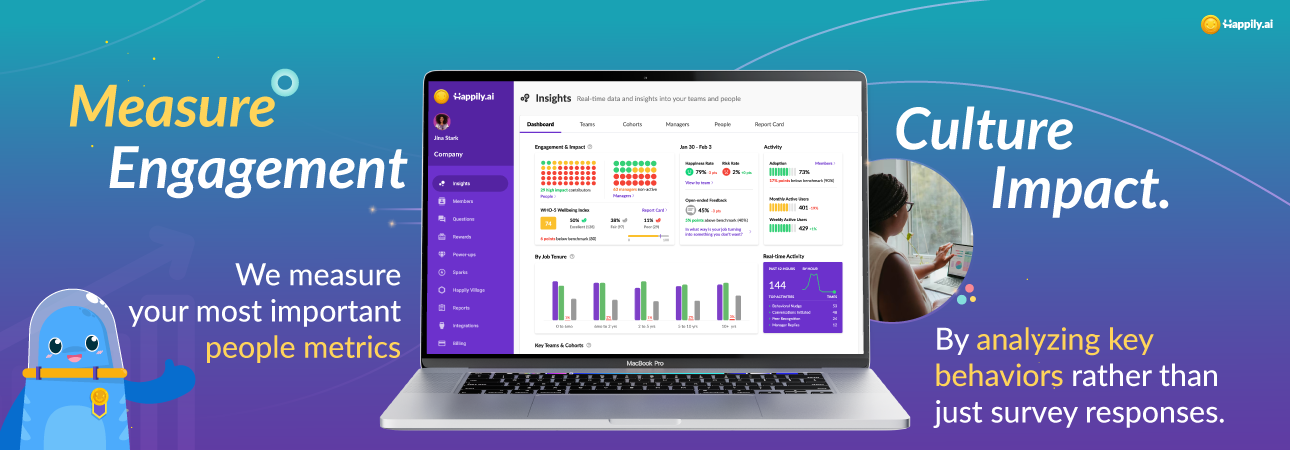Organizations today are facing an ever-increasing need to drive employee engagement and performance, but it can be challenging to align employees' goals and efforts with the overall business objectives. One solution to this challenge is the use of Objectives and Key Results (OKRs), a goal-setting framework that has been adopted by many leading companies.
What are OKRs?
OKRs, or Objectives and Key Results, are a goal-setting framework used to align and track progress towards specific, measurable, and time-bound objectives. Developed in the 1970s by Intel co-founder Andy Grove, OKRs have since been adopted by companies of all sizes and industries as a way to drive focus, accountability, and results.
At its core, an OKR consists of two parts: the objective and the key results. The objective is a clear and concise statement of what you want to achieve, while the key results are a set of quantifiable metrics that demonstrate the progress you are making towards your objective. This structure allows organizations to create a shared understanding of what success looks like and provides a clear path for tracking progress towards that success.
OKRs are also highly flexible, allowing organizations to set goals at different levels, from the individual to the team to the entire company. This flexibility allows organizations to create a shared understanding of what success looks like, while still allowing for the unique needs and perspectives of each team or individual.
Step-by-Step Guide to Setting Up OKRs for a SaaS Company
- Define the company's mission and vision: The first step in setting up OKRs is to clearly define the company's mission and vision. This provides a clear sense of direction for the entire organization, and will guide the development of the OKRs.
- Involve employees in the process: The next step is to involve employees in the process of setting up the OKRs. This can be done through meetings, workshops, or surveys, and it helps to ensure that everyone is aligned and committed to the goals.
- Identify company-level objectives: Next, identify the company-level objectives that will drive the company's growth and success. These objectives should be aligned with the company's mission and vision, and should be focused on the most important areas of the business.
- Develop departmental and individual OKRs: With the company-level objectives in place, it's time to develop the departmental and individual OKRs. These should be specific, measurable, attainable, relevant, and time-bound (SMART) and should be aligned with the company's overall goals.
- Regularly review and adjust OKRs: Once the OKRs are in place, it's important to regularly review and adjust them as needed. This helps to ensure that everyone is making progress towards the goals and that the goals remain relevant and aligned with the company's mission and vision.
- Provide regular feedback and recognition: Regular feedback and recognition are critical components of a successful OKR implementation. By providing employees with regular feedback and recognition, organizations can ensure that everyone is motivated and engaged in the process.
- Use technology to track progress: Finally, use technology to track progress against the OKRs. This can be done using project management (Trello, Asana, or Monday.com) or engagement & recognition software (Happily.ai), and it helps to ensure that everyone is making progress and that the goals are being achieved and recognized.
An example of company-level objectives
Company-level objectives for a SaaS company focusing on growth, customer retention, and product excellence could look something like this:
- Growth: Increase the number of paying customers by 50% in the next 12 months
- Customer Retention: Reduce customer churn rate by 30% in the next 6 months
- Product Excellence: Launch a new feature set that increases the overall customer satisfaction score by 25% in the next 9 months.
For each of these objectives, it would then be important to set key results that measure progress towards achieving the objectives. These key results should be quantifiable and have a specific target that can be tracked over time. For example, for the objective of increasing the number of paying customers, a key result could be to increase the number of trial users who convert to paid customers by 40% in the next 6 months.
Setting up well-defined OKRs that align with company-level objectives and are supported by key results can help to ensure that all teams are working towards the same goals and that progress can be accurately tracked and reported.
Example of Sales OKRs
Objective: Drive growth by increasing the number of paying customers
- Key Result 1: Increase the number of qualified leads generated by 50% in the next 6 months
- Key Result 2: Increase the conversion rate of qualified leads to paying customers by 40% in the next 9 months
Example of Marketing OKRs
Objective: Support growth and customer retention by increasing brand awareness and engagement
- Key Result 1: Increase the website traffic by 40% in the next 6 months
- Key Result 2: Increase the average time spent on the website by 30% in the next 9 months
- Key Result 3: Increase the number of social media followers by 50% in the next 12 months
Example of Product OKRs
Objective: Improve customer satisfaction and reduce churn by launching a new feature set
- Key Result 1: Complete the development of the new feature set by the end of Q3
- Key Result 2: Launch the new feature set to 50% of the customer base in Q4
- Key Result 3: Increase the customer satisfaction score by 25% within 6 months of launching the new feature set
Example of Engineering OKRs
Objective: Support product excellence by improving the overall performance and reliability of the product
- Key Result 1: Reduce the number of reported product bugs by 40% in the next 6 months
- Key Result 2: Increase the product uptime by 50% in the next 9 months
- Key Result 3: Reduce the average load time of the product by 30% in the next 12 months
Example of Customer Success OKRs
Objective: Improve customer satisfaction and increase retention Key Results:
- Key Result 1: Increase the average NPS score by 10 points within the next quarter
- Key Result 2: Reduce customer churn rate by 15% within the next 6 months
- Key Result 3: Increase the number of customer renewals by 20% within the next year
Example of HR OKRs
Objective: Foster a positive company culture and enhance employee satisfaction Key Results:
- Key Result 1: Increase the employee engagement score by 15% within the next quarter
- Key Result 2: Reduce the employee turnover rate by 10% within the next year
- Key Result 3: Increase the number of employees who recommend the company as a great place to work by 25% within the next 6 months
Driving company performance
By defining clear and measurable goals, OKRs help employees understand their role in achieving the overall business objectives, and provide them with a clear direction for their work. This increased focus on results and outcomes can drive employee engagement and motivation, as employees are more likely to feel a sense of ownership and purpose in their work.
Research has also shown that organizations that use OKRs are more likely to achieve their goals and see improvements in employee engagement and performance. A study by McKinsey & Co found that organizations that use OKRs are more likely to be successful in their efforts to drive performance and engagement, compared to those that do not use this framework.
However, implementing OKRs is not as simple as just setting goals. To be effective, organizations need to have a clear understanding of the business objectives, and ensure that the OKRs are aligned with these objectives. It's also important to involve employees in the goal-setting process, as this can help to ensure that the OKRs are aligned with their needs and preferences.
The Power of Regular Communication and Feedback with OKRs
The regular review and feedback of OKRs is crucial to their success and can have a significant impact on employee engagement and performance. By regularly reviewing progress against the OKRs, employees are kept focused on their goals and are able to adjust their approach as needed. This helps to keep everyone on track and ensures that everyone is making progress towards the organization's goals.
Additionally, regular feedback on employee performance provides an opportunity for organizations to identify any obstacles that may be preventing employees from achieving their goals. This can include issues with resources, support, or alignment with the rest of the organization. By identifying these obstacles and addressing them, organizations can ensure that employees are able to achieve their goals and reach their full potential.
Feedback is also a key component of employee engagement. When employees feel heard and valued, they are more likely to be engaged and motivated to perform at their best. Regular feedback through OKRs provides employees with the opportunity to receive constructive criticism, as well as recognition and praise for their hard work and achievements. This creates a positive feedback loop that further drives engagement and performance.
Conclusion
In conclusion, adopting OKRs is an effective way for leaders to drive performance, growth and productivity in their organizations. However, it's important to remember that employee engagement and psychological safety are critical components in the success of OKRs. Goal setting can only be effective when there is open communication and a supportive environment for employees to work in. Prioritizing employee engagement and psychological safety ensures that your team feels valued and empowered to achieve their objectives. Ultimately, the goal of OKRs is to align everyone in the organization towards a common vision, and this requires trust, transparency and collaboration. By taking a holistic approach to OKRs, leaders can create a positive and productive work environment, where everyone feels inspired to contribute to the success of the company.











